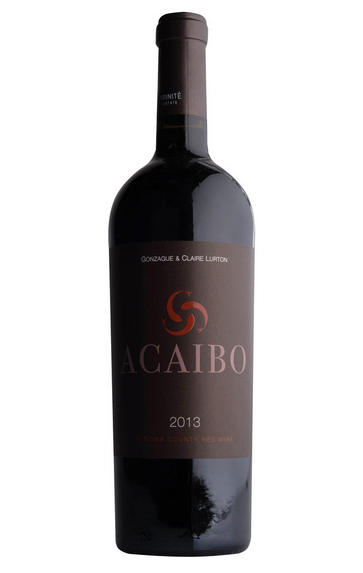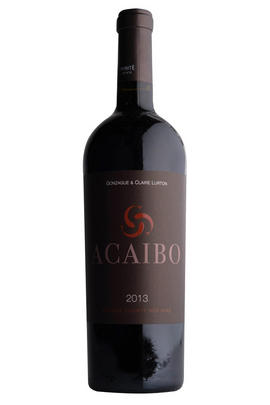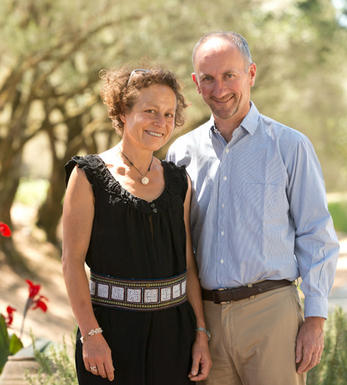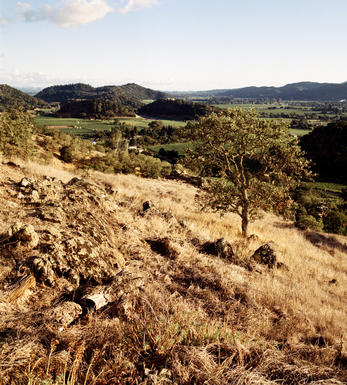
2013 G. & C. Lurton, Trinité Estate, Acaibo Red, Sonoma County, California, USA

Critics reviews
A blend of 56% Cabernet Sauvignon, 34% Merlot and 10% Cabernet Franc, the 2013 Acaibo has a deep garnet-black color and notes of crme de cassis, preserved plums, blackberry pie and cigar boxes plus hints of bay leaves and incense. Medium-bodied and elegantly crafted, it offers layers of evolving, savory flavors with an approachable frame of ripe tannins and pleasant herbal lift on the finish.
Lisa Perrotti-Brown, Wine Advocate (Mar 2017)
About this WINE

G. & C. Lurton Trinite Estate
G. & C. Lurton Trinité Estate, founded by Gonzague and Claire Lurton, represents the legacy of fourth-generation winemakers from Bordeaux, who have extended their winemaking expertise to Sonoma County, California. Their estate is situated on the hillside of Chalk Hill Mountain, embracing the region’s stunning beauty. The winery focuses on producing high-quality wines, with one of its flagship offerings being the red blend Acaibo.
Central to their winemaking philosophy is an organic, farming-focused approach in the vineyards, focusing on growing Cabernet Sauvignon, Cabernet France, and Merlot grapes. Sustainability and organic farming practices are core principles for the estate, and they work closely with some biodynamic practices to preserve the land’s heritage and ensure a sustainable future.
The 24-acre vineyard of Trinité Estate is uniquely located between the cool Russian River Valley to the west, the warm Alexander Valley to the northeast, and Knights Valley. This diverse terroir, characterised by various microclimates, topography, and soils, significantly shapes the delicate and well-balanced wines produced here. G. & C. Lurton Trinité Estate has strategically replanted 12 acres with Cabernet Sauvignon and Cabernet Franc clones specifically suited to the vineyard’s soil profiles, exposition, and slopes.
In the vineyard, G. & C. Lurton Trinité Estate focuses on maintaining a natural equilibrium and promoting organic and microbial growth. They are committed to sustainable practices, using minimal to no conventional chemical treatments, and incorporate various biodynamic principles into their viticulture regime, creating a living, breathing ecosystem supporting exceptional fruit growth.

Sonoma County
North Coast's Sonoma County is California's largest AVA with 19,800 ha (2005) of vines. It has forever been the home of the meek and mild small grower as compared to the grandeur and might of neighbour Napa; more picturesque too, as much of the sandy, gravely loam land belonged to true orchards and fruit farms until the 1970s.
Sonoma Valley covers a small part of Sonoma County but its wines often outshine its illustrious neighbours in Napa County. Zinfandel, Pinot Noir, Chardonnay, and Cabernet Sauvignon are cultivated here with much success. Sonoma Valley has long enjoyed a special place in the history of California wine. The first vineyards in the valley were planted by Franciscan monks in 1823. In 1857 Agoston Haraszthy, one of the founding fathers of California's commercial winemaking, opened here the highly successful Buena Vista Winery.
Closer to the coast are the region's top producing AVAs for Pinot Noir and Chardonnay: Russian River, Sonoma Coast and Green Valley, while the slightly warmer Dry Creek and Alexander Valleys have earned a reputation as a hotspot for Cabernet, and increasingly, Zinfandel and Merlot.
Recommended producers
Ridge, Teira, Williams & Selyem, Rochioli are definitely worth investigating.

Cabernet Sauvignon Blend
Cabernet Sauvignon lends itself particularly well in blends with Merlot. This is actually the archetypal Bordeaux blend, though in different proportions in the sub-regions and sometimes topped up with Cabernet Franc, Malbec, and Petit Verdot.
In the Médoc and Graves the percentage of Cabernet Sauvignon in the blend can range from 95% (Mouton-Rothschild) to as low as 40%. It is particularly suited to the dry, warm, free- draining, gravel-rich soils and is responsible for the redolent cassis characteristics as well as the depth of colour, tannic structure and pronounced acidity of Médoc wines. However 100% Cabernet Sauvignon wines can be slightly hollow-tasting in the middle palate and Merlot with its generous, fleshy fruit flavours acts as a perfect foil by filling in this cavity.
In St-Emilion and Pomerol, the blends are Merlot dominated as Cabernet Sauvignon can struggle to ripen there - when it is included, it adds structure and body to the wine. Sassicaia is the most famous Bordeaux blend in Italy and has spawned many imitations, whereby the blend is now firmly established in the New World and particularly in California and Australia.


Buying options
Add to wishlist
Description
The Lurton family of Margaux property Durfort-Vivens have successfully uncovered a small 10 hectare plot in Sonoma that is capable of crafting deliciously Margaux styled wines in the heart of California. 2013 Acaibo is the product of 26 year old vines just a stone’s throw from other famous vineyards, but whilst others may tend tend towards richness and power Acaibo maintains a Margaux-like poise. Gently perfumed first impressions are brought forward by well-judged French oak notes woven into a savoury Cabernet Sauvignon framework. The gently powdery tannins coalesce with a silky feel and reassuringly ripe but suitably subtle blackcurrant fruit to balance it out. It is the elegant lift of this wine however that sets it apart from its neighbours, and it is that Margaux influence that should see this evolve beautifully over the next 5 years, if you can resist it now.
Stuart Rae, Buying Commercial Manager, Berry Bros. & Rudd (Nov 2020)
wine at a glance
Delivery and quality guarantee